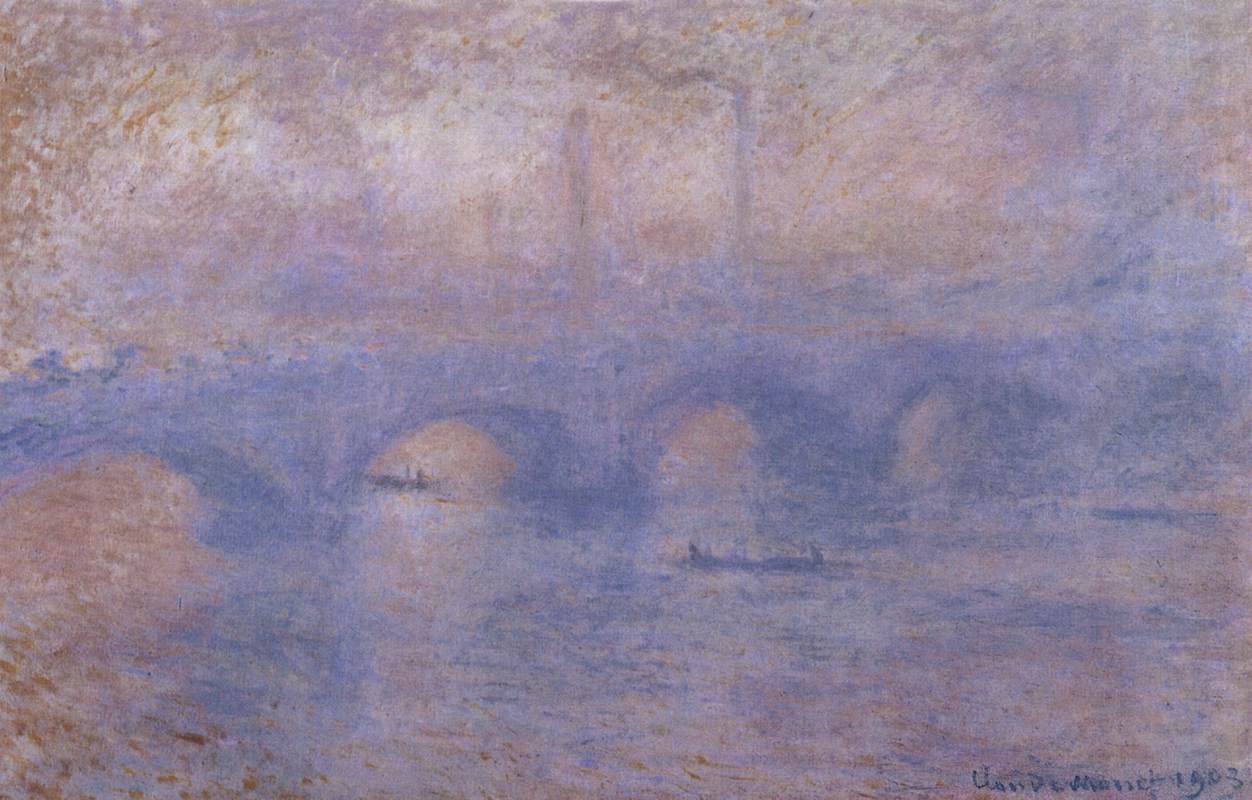Description
Impressionist artist Claude Monet's painting "Waterloo Bridge, Effect of Fog" is a masterpiece that stands out for its artistic style, composition, color, and technique. The painting was painted in 1903, when the artist was 63 years old, and it measures 65 x 100 cm.
What is most striking about this work is the way Monet captures the atmosphere of London on a foggy day. The view of Waterloo Bridge slowly fades into the mist, creating a sense of mystery and melancholy. The loose brushwork technique and the application of translucent layers of paint create an effect of light and shadow that makes the mist seem palpable.
The composition of the painting is impressive. Monet uses the arches of the bridge to frame the view and create depth. The River Thames flows under the bridge, and boats and boats add a touch of life to the scene. At the top of the painting, the gray sky and mist blend into one tone, creating a sense of endlessness.
In terms of color, Monet uses a limited palette of gray and blue tones, but manages to create a variety of hues and textures. The reflections in the water and the details on the boats are particularly impressive.
The story behind this painting is also interesting. Monet visited London several times throughout his life and fell in love with the city. He painted several views of the River Thames and Waterloo Bridge, but this particular work is one of his most famous. The painting was acquired by the Chicago Museum of Art in 1933, and has been displayed in several major exhibitions of Impressionist art.
In short, "Waterloo Bridge, Effect of Fog" is a masterpiece of impressionism that captures the atmosphere of London on a foggy day impressively. The technique, composition, and color are impressive, and the story behind the painting adds a touch of intrigue. Without a doubt, it is a work that is worth contemplating carefully to appreciate its beauty and subtlety.

